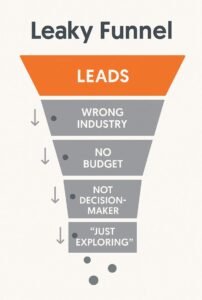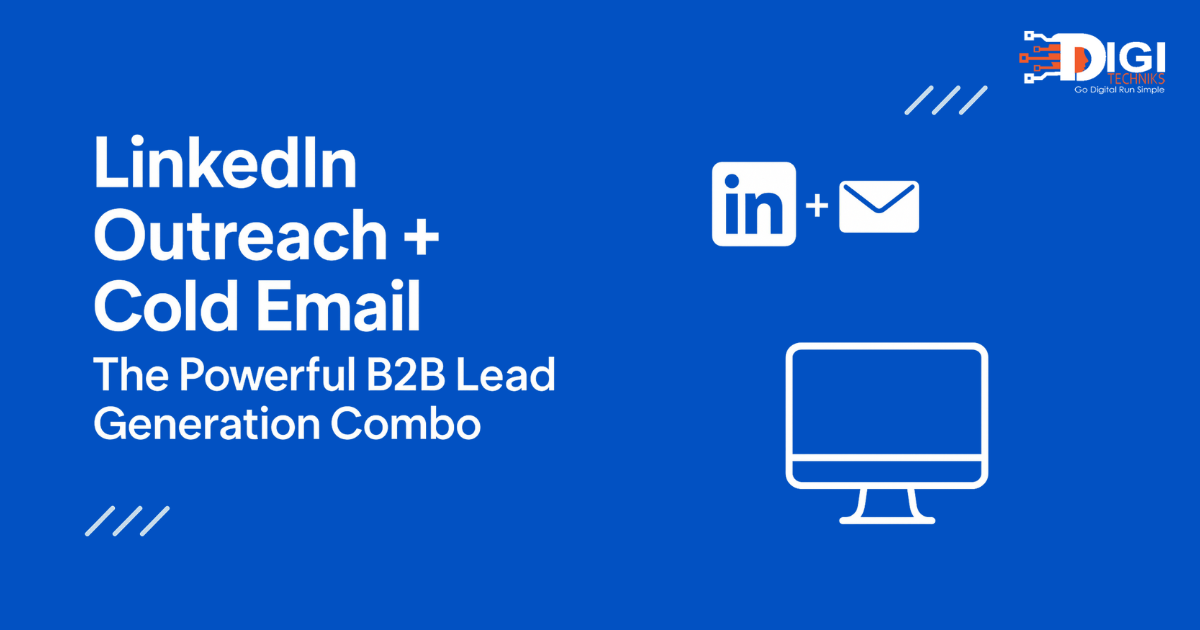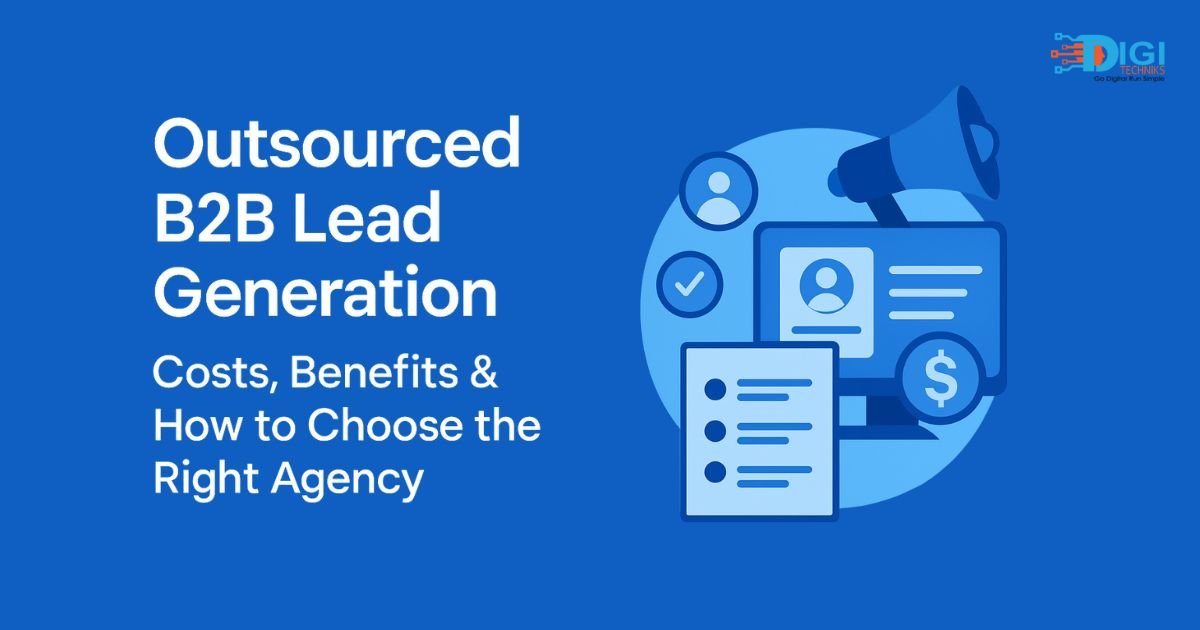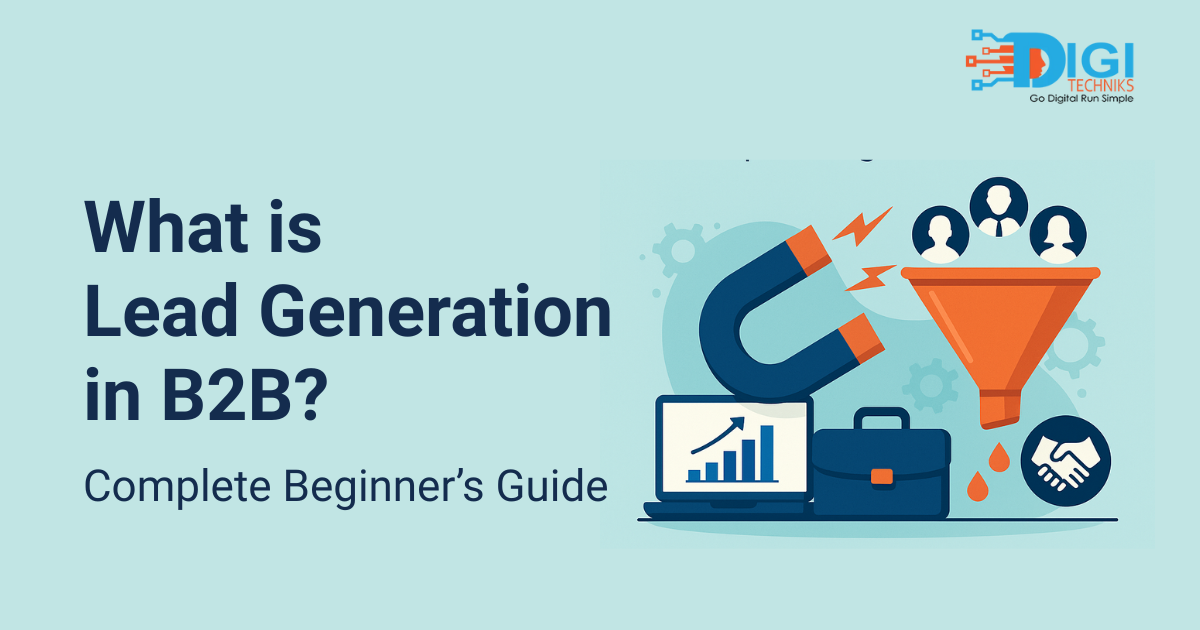
You’re getting leads.
Your CRM is filling up.
Your sales team is busy making calls.
But week after week, the same story plays out:
- Wrong industry
- No budget
- Not the decision-maker
- “Just exploring” with no real buying intent
If this sounds familiar, you’re not alone. Most B2B companies face a lead quality problem, not a lead volume problem. On paper, the numbers look good—traffic is healthy, your SDRs are working hard, and your campaigns are running. But when those leads hit the pipeline, the results are underwhelming.
The frustrating part? It’s not always your ads, your cold emails, or your SDRs to blame. In many cases, the real issue runs deeper—it’s a system problem.
We’ve seen this pattern in SaaS startups, IT services firms, and B2B consultancies alike: even with an outreach process in place, there’s often a gap between the pitch, the persona, and the process.
And when that alignment is missing, you end up with a leaky funnel qualified prospects slipping away before they ever become real opportunities.

Key Takeaways:
✅ Misaligned targeting: You don’t have a clearly defined Ideal Customer Profile (ICP).
✅ Weak positioning: Your messaging is generic and doesn’t resonate.
✅ No hook offer: You’re selling everything upfront, so nothing sticks.
✅ Wrong channels or sequencing: Your outreach strategy doesn’t match your audience.
✅ Slow follow-up: You’re losing hot leads because response times are too long.
✅ Weak trust signals: Your website fails to prove you can deliver.
✅ No system: You rely on random tactics instead of a repeatable lead-gen process.
The Real Problem Is Systemic, Not Tactical
When B2B sales leads aren’t converting, the instinct is to tweak a campaign:
- Change the ad creative
- Switch the cold email subject line
- Test a new LinkedIn connection message
While these micro-adjustments have their place, they rarely fix the real issue.
You don’t need more leads. You need better ones.
A high-quality lead is someone who:
- Fits your Ideal Customer Profile (ICP)
- Has the budget and authority to make a decision
- Is actively seeking a solution you offer
- Feels confident you can deliver
If your outreach consistently misses one or more of these points, it’s not because your email copy wasn’t “catchy” enough—it’s because the entire lead generation system wasn’t built to attract and qualify the right people in the first place.
What a Healthy B2B Lead Generation System Looks Like
Before a single ad runs or a single cold email is sent, winning teams:
- Clarify the audience down to job title, industry, and pain points.
- Refine the offer so it speaks directly to a problem the ICP urgently wants solved.
- Choose the right channels based on audience behavior, not convenience.
- Align the message, persona, and process so every touchpoint feels relevant and credible.
This is exactly what seasoned B2B lead generation partners focus on before launching any campaigns—because they know that fixing the system beats fixing a single tactic.
Symptom-Based Diagnosis: What Might Be Going Wrong
If you’re drowning in leads but struggling to find the ones worth your sales team’s time, you’re likely facing one or more of these silent growth killers.
✅Symptom 1: Undefined ICP – You’re Talking to Everyone (and No One)
If your targeting is too broad, your outreach becomes noise. Without a clear Ideal Customer Profile (ICP), you end up attracting a mixed bag—students, small business owners outside your budget range, or corporate professionals in unrelated industries. This wastes ad spend, SDR time, and clogs your CRM with irrelevant records.
It’s not enough to know your “industry” or “target region.” In B2B, precision is everything. You need to narrow it down to company size, job title, buying authority, pain points, and even the technology stack they use.
Effective lead generation systems segment audiences into micro-verticals and map outreach to specific aspirations and challenges. At Digitechniks, we’ve seen campaigns triple their reply rates simply by focusing on one vertical at a time with personalized messaging. This isn’t guesswork—it’s systematic targeting backed by data.
When your ICP is crystal clear, every channel you use—LinkedIn, cold email, SEO—becomes a sniper rifle instead of a shotgun.
✅ Symptom 2: Generic Messaging That Doesn’t Resonate
If your pitch sounds like “We help businesses grow” or “We improve ROI,” you’re blending in with thousands of others saying the same thing. Generic messaging doesn’t speak to your ICP’s urgent problems or desired outcomes. The result? They ignore you.
Decision-makers are bombarded with pitches daily. If your messaging doesn’t quickly prove you understand their world, they’ll move on to someone who does.
Top-performing campaigns are built on aspirational, use-case-driven messaging. Instead of saying “We improve your marketing,” say “We help SaaS companies cut CAC by 30% in 90 days using multi-channel sequencing.”
We’ve built dozens of campaigns where the first line in an email wasn’t about us—it was about their current challenge, in their exact language. This shift in messaging alone can turn a cold campaign into a meeting machine.
✅Symptom 3: No Differentiated Offer to Open Doors (The T-Model)
Many companies try to pitch everything they do in the first interaction—SEO, paid ads, branding, automation. The prospect feels overwhelmed, and none of it sticks. Without a differentiated, easy-to-understand offer, you don’t create a “yes” moment.
In B2B, you need a hook—an entry point offer that solves a pressing problem fast. This is what starts the relationship and earns you the right to present your full range later.
A proven method is the T-Model strategy: lead with one high-converting, problem-solving offer, then cross-sell other services once trust is built. For example, offering a “Lead Quality Audit” can open doors to a full lead generation system build-out.
We’ve implemented T-Model offers for IT firms, SaaS companies, and consultants that went from months of stalled conversations to closing deals within weeks—because prospects said “yes” to the right starting point.
✅ Symptom 4: Wrong Channels or Outreach Sequences
The Problem:
If you’re pouring budget into LinkedIn ads but your ICP rarely engages there—or relying only on SEO when your market responds better to direct outreach—you’re limiting your reach. Worse, even if you’re in the right channel, your sequencing might be off (e.g., asking for a meeting before building any trust).
Not all channels perform the same for every industry. Without testing and sequencing, you risk burning good leads with the wrong approach.
The most effective teams use channel stacks—combining LinkedIn, cold email, and SEO in a coordinated sequence. For example, starting with LinkedIn connection + soft content touch, then sending a warm email, followed by a retargeted ad.
We’ve seen 3x higher conversions in campaigns where channels worked together instead of in silos. It’s not about choosing LinkedIn or cold email—it’s about knowing when and how to use each.
✅ Symptom 5: Slow Follow-Up is Killing Your Conversions
Leads are perishable. In B2B, your prospect is likely talking to multiple vendors at the same time. If your follow-up takes days, you’re already losing to faster competitors.
Harvard Business Review found that companies responding within 1 hour are 7x more likely to qualify a lead than those responding after 2 hours. In some cases, the difference between winning and losing a deal is measured in minutes.
Every high-converting funnel we’ve seen has a follow-up system in place—whether that’s SDR alerts, WhatsApp automations, or multi-channel reminders to touch base within 15 minutes.
Read more: LinkedIn Automated Outreach: Proven Blueprint for Generating B2B Leads (Zero Ad Spend)
The Silent Killer: Weak Website Foundation
Even the best outreach or ad campaigns will collapse if your website doesn’t back up your credibility. In B2B, your website isn’t just a brochure—it’s your silent salesperson. The moment a prospect receives your email or LinkedIn message, they will Google you or click your link. If what they see doesn’t inspire trust, they’ll bounce—often without replying.
This is where many companies lose qualified leads without realizing it. Your campaigns may be bringing the right people in, but your digital presence isn’t giving them enough confidence to take the next step.
Common Trust Gaps We See:
- No case studies: Prospects can’t see proof of results for companies like theirs.
- Outdated design: Looks like it hasn’t been updated in years, signaling stagnation.
- Generic content: Copy that could apply to any company, not just yours.
- No use-case pages: Prospects can’t find content tailored to their industry or role.
- Missing blog strategy: No fresh, valuable insights to position you as an authority.
The best-performing outreach systems don’t just point to a homepage—they drive traffic to trust assets:
- Case study pages by vertical (e.g., SaaS, IT services, B2B consulting)
- SEO-optimized blog posts that answer ICP-specific questions
- Use-case pages that map problems to your exact solution
At Digitechniks, we’ve rebuilt client outreach flows to direct leads to dedicated landing pages showcasing relevant results. When a SaaS decision-maker clicks and sees a case study about another SaaS company that got measurable results, they’re far more likely to reply and book a call.
If you’re unsure whether your website is building or breaking trust, our Free Lead Quality Audit includes a Website Trust Review to identify gaps before you launch your next campaign.
Fixing the System: What Winning Teams Do Differently
The Problem-Solver’s Mindset:
B2B teams that consistently generate qualified sales leads don’t rely on “lucky campaigns” or one-off tactics. They build systems that make high-quality leads a predictable outcome. While struggling teams keep asking, “What channel should we try next?”, winning teams ask, “How do we engineer a process that works every time?”
The difference is in how they structure their lead generation process—from setting revenue goals all the way to automated follow-up.
What Winning Teams Have in Common
-
Revenue-First Planning
They start with clear revenue targets and reverse-engineer how many leads and meetings are needed to hit them. -
Segment-Specific Campaigns
Instead of a one-size-fits-all pitch, they create unique campaigns for each ICP segment—with messaging, offers, and case studies tailored to each. -
Rapid Follow-Up
They treat lead response time as a competitive advantage—often responding within minutes, not hours or days. -
Right Partner, Not Just a Vendor
They work with execution partners who bring proven frameworks, not agencies that simply “run ads.”
Some companies spend 12–18 months building this capability in-house—often with trial and error that costs time and money. Others shortcut the process by partnering with specialists who have already tested what works across industries.
At Digitechniks, our systems are designed to be “plug-and-play” for B2B businesses—combining ICP clarity, T-Model offers, channel sequencing, and follow-up automation into one repeatable framework. This isn’t about random campaigns—it’s about building a lead generation engine that can scale.
When your team follows a proven system, you stop chasing the next big tactic and start running a predictable process that generates qualified meetings every single week.
Proof: What Happens When You Fix It
The Real-World Turnaround:
One mid-sized B2B IT services firm came to us frustrated. They were running LinkedIn ads, sending cold emails, and attending industry events—yet almost every lead they spoke to was unqualified. The sales team felt like they were working harder than ever, for less.
We started by re-engineering their lead generation system:
- Defined their ICP down to industry, company size, job role, and budget range.
- Repositioned their offer using the T-Model strategy—leading with a high-impact, low-resistance hook.
- Built a channel stack combining LinkedIn warm-up content, personalized cold emails, and retargeting ads.
- Implemented follow-up automation to ensure every lead was contacted within 15 minutes.
The Results in 30 Days:
- 0 → 4–6 qualified meetings per week with decision-makers in their exact ICP.
- Reply rates tripled on cold outreach compared to their previous campaigns.
- First deal closed within 3 weeks of launching the new system—worth over ₹12 lakhs in annual revenue.
These results didn’t come from “trying another tool” or “writing catchier emails.” They came from fixing the system at its foundation—something we’ve replicated across SaaS, consulting, and IT service clients.
When your targeting, offer, channels, and follow-up are aligned, lead quality naturally improves—and with it, your close rates.
Pre-Launch Checklist: Is Your B2B Lead Generation System Ready?
If your campaigns keep attracting the wrong leads, use this checklist to spot gaps before you spend another rupee on ads or outreach.
1. Website Assets Are Trust-Ready
- Case studies by vertical or ICP segment
- Use-case pages mapping problems to your solutions
- SEO-optimized blog posts proving thought leadership
2. ICPs Are Clearly Defined
- Industry, job role, company size, tech stack, budget range
- Pain points and aspirations documented for each segment
3. Offers Are Differentiated
- One high-converting hook per ICP (T-Model strategy)
- Clear entry point that solves an urgent problem
4. Goals Are Revenue-Linked
- Revenue targets → required leads → required meetings
- KPIs tied to qualified meetings, not just lead volume
5. SDR or Point of Contact Is Assigned
- Dedicated resource for prompt follow-ups
- Tools and scripts ready for multi-channel responses
6. Follow-Up Automation Is In Place
- Responses triggered within minutes via LinkedIn, email, or WhatsApp
- Sequences designed to nurture non-responders
This is where most campaigns fail—not because the ad copy was weak, but because the foundation wasn’t ready. At Digitechniks, we run every client through this checklist before launching any outreach. It’s why we see consistent results across industries.
By following this pre-launch process, you’re not just “trying another campaign”—you’re building a repeatable system for attracting high-quality B2B leads.
Tired of Unqualified Leads? Let’s Fix Your System.
If your sales calendar isn’t filling with the right meetings, the problem isn’t your team’s effort—it’s your lead generation system. And the good news? Systems can be fixed.
We’ll help you:
- Diagnose why unqualified leads are flooding your pipeline
- Pinpoint the leaks in your targeting, messaging, or follow-up
- Design a T-Model offer and multi-channel strategy that gets decision-makers to say “yes”
Book Your Free Lead Quality Audit + T-Model Strategy Session
In 45 minutes, we’ll walk you through:
- Where your current process is losing qualified leads
- How to restructure your outreach for higher response rates
- What proven systems top B2B teams use to get consistent, high-quality meetings
No guesswork. No generic advice. Just a clear plan for better leads.
You can also explore our full guide on Zero‑Budget B2B Lead Generation for organic strategies that complement Cold Email Outreach.
FAQs
What is a qualified B2B sales lead?
A qualified B2B sales lead is a prospect who fits your Ideal Customer Profile, has decision-making authority, budget, and a genuine need for your product or service.
Why am I getting unqualified B2B leads?
Common causes include unclear ICP targeting, generic messaging, lack of a differentiated offer, poor channel selection, and slow follow-up.
How do I improve my B2B lead quality?
Define a precise ICP, tailor your messaging to their needs, use a multi-channel approach, and implement a fast, automated follow-up system.
What is the T-Model strategy in lead generation?
The T-Model strategy starts with one high-converting “hook” offer to open doors, then expands into cross-selling your core services.
Which channels are best for B2B lead generation?
LinkedIn, cold email outreach, and SEO are highly effective when used together in a strategic sequence.
How fast should I follow up with B2B leads?
Follow up within 15 minutes to increase your chances of qualifying and converting leads.

Sharan Kulkarni
Sharan Kulkarni is a B2B Lead Generation Specialist and author of ROI Decoder, with 10+ years’ experience helping SaaS, IT, and service firms generate predictable qualified leads. He leads Digitechniks’ outreach strategies across LinkedIn, cold email, and SEO. Connect with Sharan on LinkedIn



